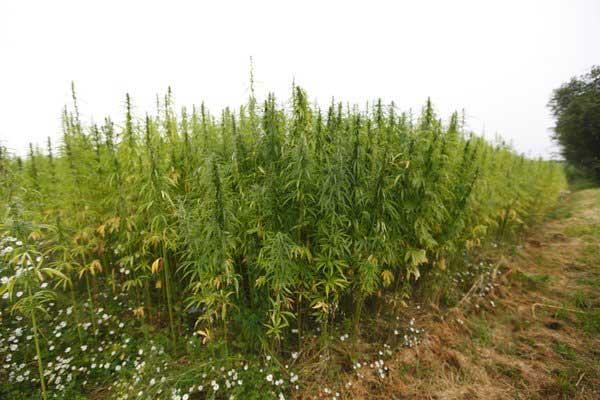Hemp is one of the most versatile and robust plants on the planet. With uses across multiple industries such as textiles, construction, food, and more, hemp has the potential to transform and stimulate economic growth in rural Australian communities. However, several obstacles have hindered the widespread adoption of hemp as a mainstream crop in Australia. In this article, we will explore the current state of hemp in Australia, the challenges facing the fledgling industry, and the bright future ahead for this eco-friendly super-crop.

Australia is in the early stages of developing a hemp industry. Recent changes in legislation have now made it legal to grow hemp crops across the country. As more farmers begin cultivating this amazingly strong and fast-growing plant, they are starting to unlock its enormous potential. However, many challenges remain before hemp can become a mainstream agricultural industry.
The Tough Task of Harvesting Hemp
One of the biggest obstacles facing hemp growers is finding an efficient way to harvest the crop. Hemp has an extraordinarily strong and woody stalk that can grow over 6 meters tall in just a few months. This makes it incredibly difficult to harvest using traditional farming equipment. At his farm in Wentworth, New South Wales, Gavin Hopkins is attempting to overcome this challenge by using a 510 horsepower harvester fitted with specialized tungsten steel blades strong enough to cut through the robust hemp plants. Even with this heavy-duty machinery, harvesting hemp is proving to be tougher than any other crop Hopkins has encountered in his decades of farming experience.
The Difficulty of Processing Hemp Stalks
After harvesting comes the difficult task of separating the valuable fiber and inner core material called “hurd” from the hemp stalks. For centuries until more modern synthetic fibers emerged, the outer fiber of the hemp stalk was used to create marine ropes and sails due to its tremendous strength. The hurd was also utilized as a building material called “hempcrete”, favored for its durability and energy efficiency. However, finding a way to cost-effectively remove the fiber and hurd from the stalks has long plagued the hemp industry. Hopkins believes his specially modified harvester and on-farm “decorticating” processing system has finally achieved the elusive goal of efficiently separating hemp stalk components. If this mechanized method scales successfully, it could be the breakthrough that unleashes industrial hemp’s full economic potential.
Overcoming Hemp’s Confusion with Marijuana
Another obstacle hampering hemp is confusion with its cannabis cousin, marijuana. While hemp and marijuana look nearly identical, they contain vastly different levels of the psychoactive compound THC. By definition, industrial hemp contains less than 0.3% THC, while marijuana has significantly higher THC content. This chemical distinction is extremely important. The Australian Hemp Council maintains a firm neutral position on marijuana but focuses solely on supporting low-THC hemp and its multitude of uses. Outdated restrictions previously prohibited hemp farming, but recent legislative changes have differentiated hemp from marijuana and paved the way for this burgeoning new agricultural industry.
Hemp Variety Trials Underway Across Australia
To further expand hemp cultivation across diverse regions and climates, the federal agency AgriFutures Australia has funded industrial hemp variety trials in every state and territory. These tests are evaluating different hemp varieties to determine optimal growing conditions, best planting times, and ideal latitudes for maximizing yields. The expansive two-year trials will provide Australian farmers with the knowledge of which hemp varieties thrive in their local area. By the end of 2024, clear region-specific recommendations will be available so hemp can flourish as a broad-acre crop nationwide.
The Wide-Ranging Uses of Hemp
What makes hemp so enticing to farmers and manufacturers is its astounding versatility. While profitability will dictate what hemp is ultimately grown for, having such a diverse array of potential end uses is a major plus for this emerging crop. The fiber can be used for textiles, bioplastics, insulation, paper, and even supercapacitors for energy storage. The hearty hurd can create hempcrete building materials, animal bedding, oils, waxes, and food. Hemp requires very little water or agrichemicals to grow. It also has deep roots that improve soil health, making it an ideal rotational crop. With so many applications, hemp offers Australian farmers and rural communities a chance to create new revenue streams and local manufacturing jobs.
Recent Advances Bringing Hope for Hemp
Industry leaders and innovators recently gathered at the Australian Hemp Council’s fiber forum to share ideas and forge collaborations within the blossoming hemp space. Despite over $50 million already invested, the industry still requires further capital infusion to reach its full potential. But major corporate investors are now getting onboard, with projections of $200 million more within the next two years. In construction, where hempcrete is highly valued for sustainability, over 300 hemp houses have been built across Australia to date. As energy costs rise, so will demand for energy-efficient hemp buildings. On cotton country, researchers are investigating whether cotton ginning infrastructure could be used to process hemp fiber, which would provide a huge boost to large-scale hemp adoption.
Producing a Diverse Range of Innovative Hemp Products
Companies like Zebrek Technologies are leading the way in discovering new applications and products that can be created with hemp. Their factory east of Melbourne manufactures an incredible array of hemp goods. From durable flooring to decorative wall panels, matting to pipes, even bulletproof armor, the versatility of hemp fiber allows it to be transformed into almost any building material. And since hemp matures within 100 days after planting, it offers a rapid and renewable fiber source compared to alternatives like timber which take decades to grow. According to Zebrek’s founder, no other plant on Earth can produce so much useful fiber in such a short amount of time. With Australia’s optimal growing conditions, hemp provides an opportunity to build a new agricultural and manufacturing sector.
Conclusion
Industrial hemp presents an exciting chance for Australian farmers to add a high-value rotation crop and create additional income streams. While the industry is still young, advancements in harvesting, processing and product development are helping overcome previous barriers. With perseverance and continued investment, hemp is poised to emerge as a major player in Australian agriculture over the next decade, stimulating economic activity in rural communities across the country. The future looks bright for this eco-friendly, fast-growing, super-versatile supercrop!






